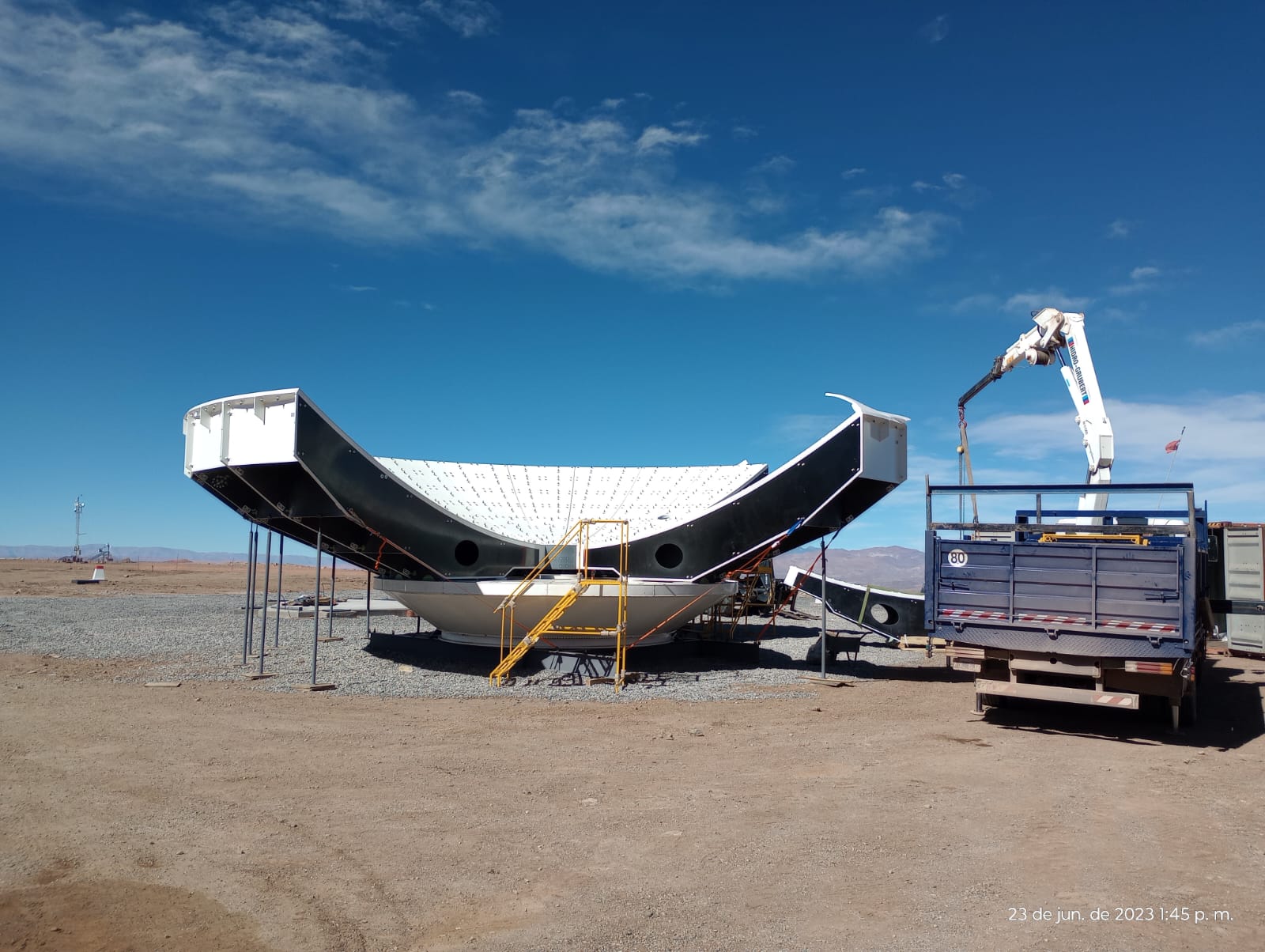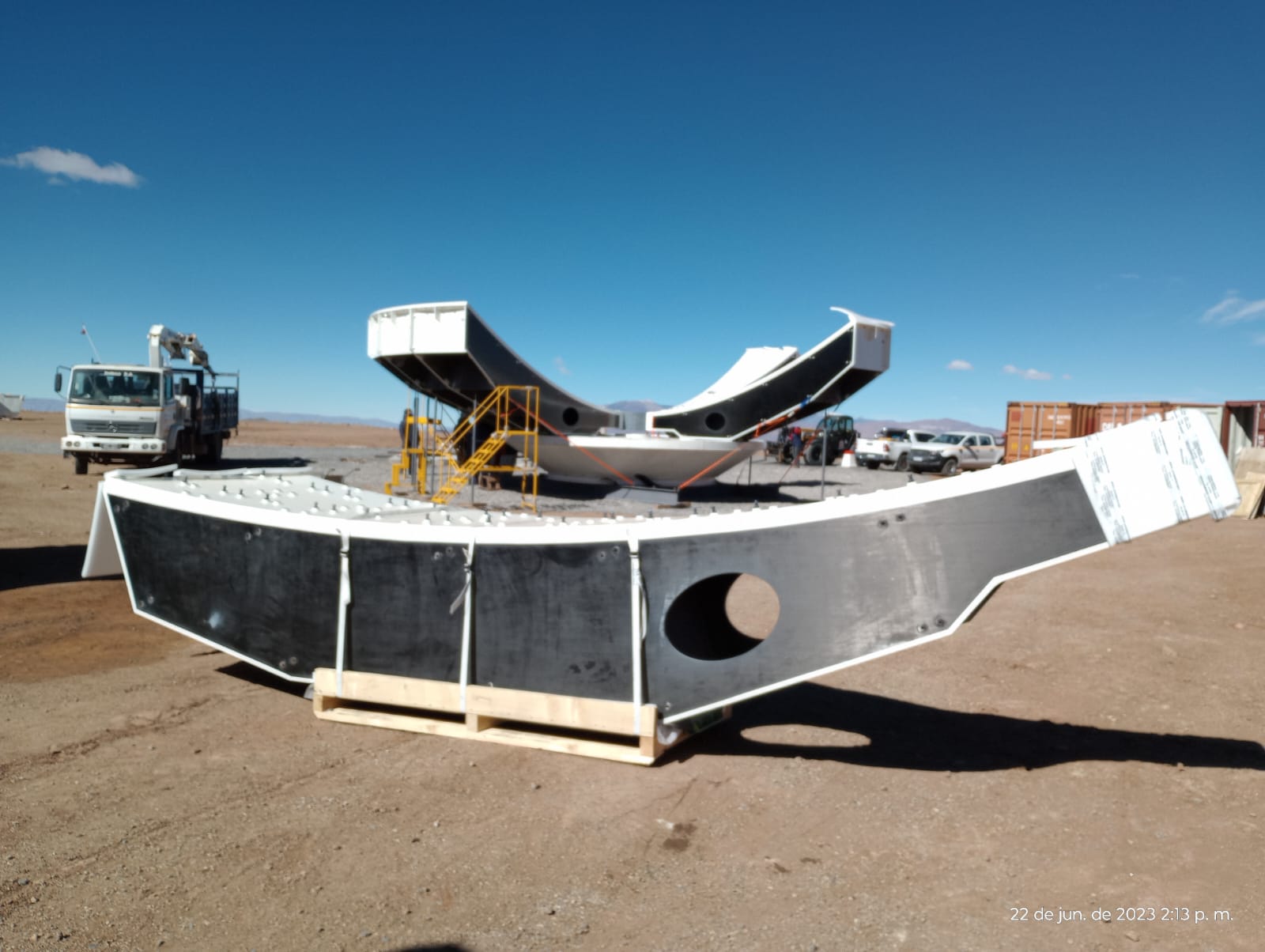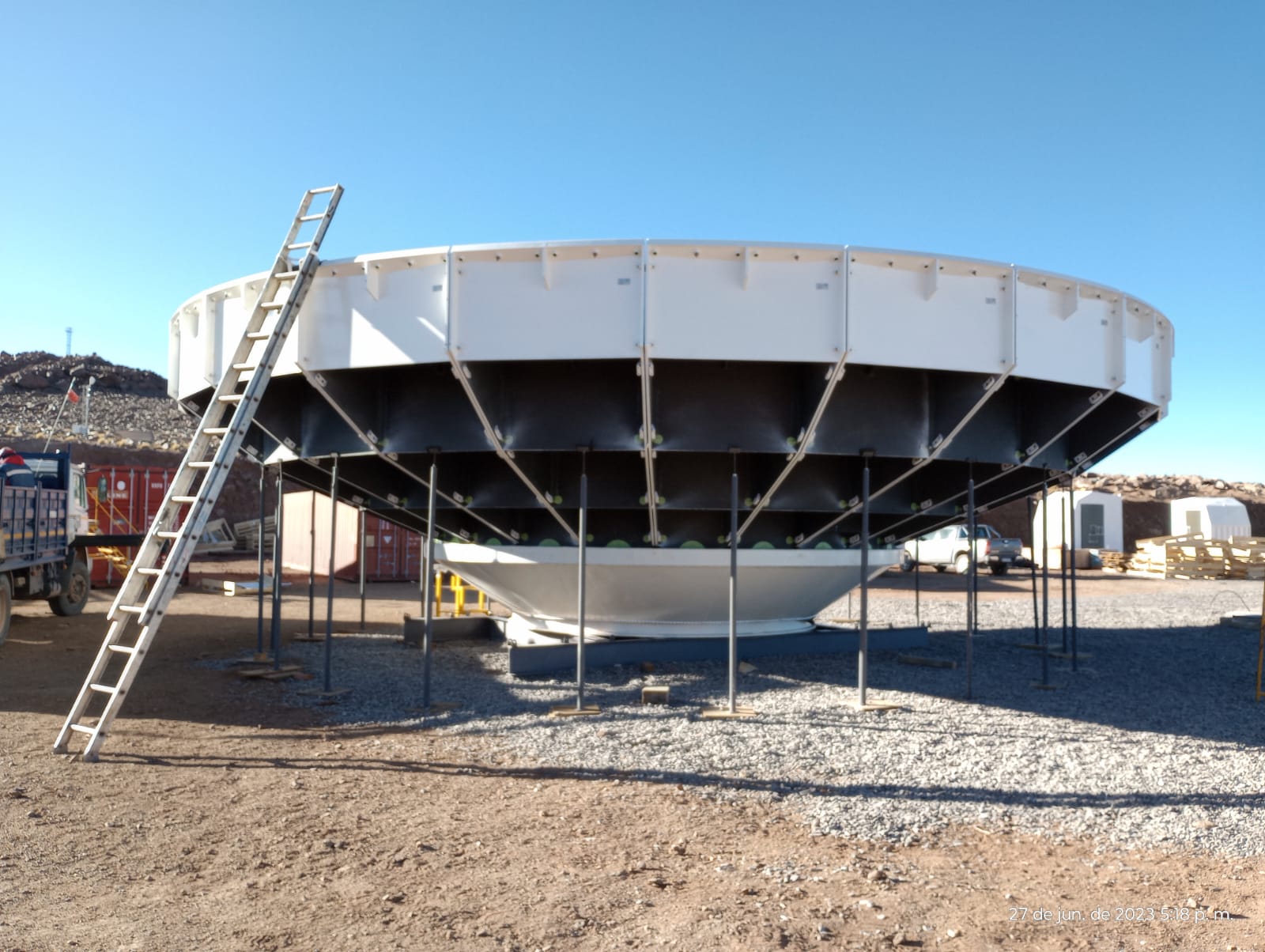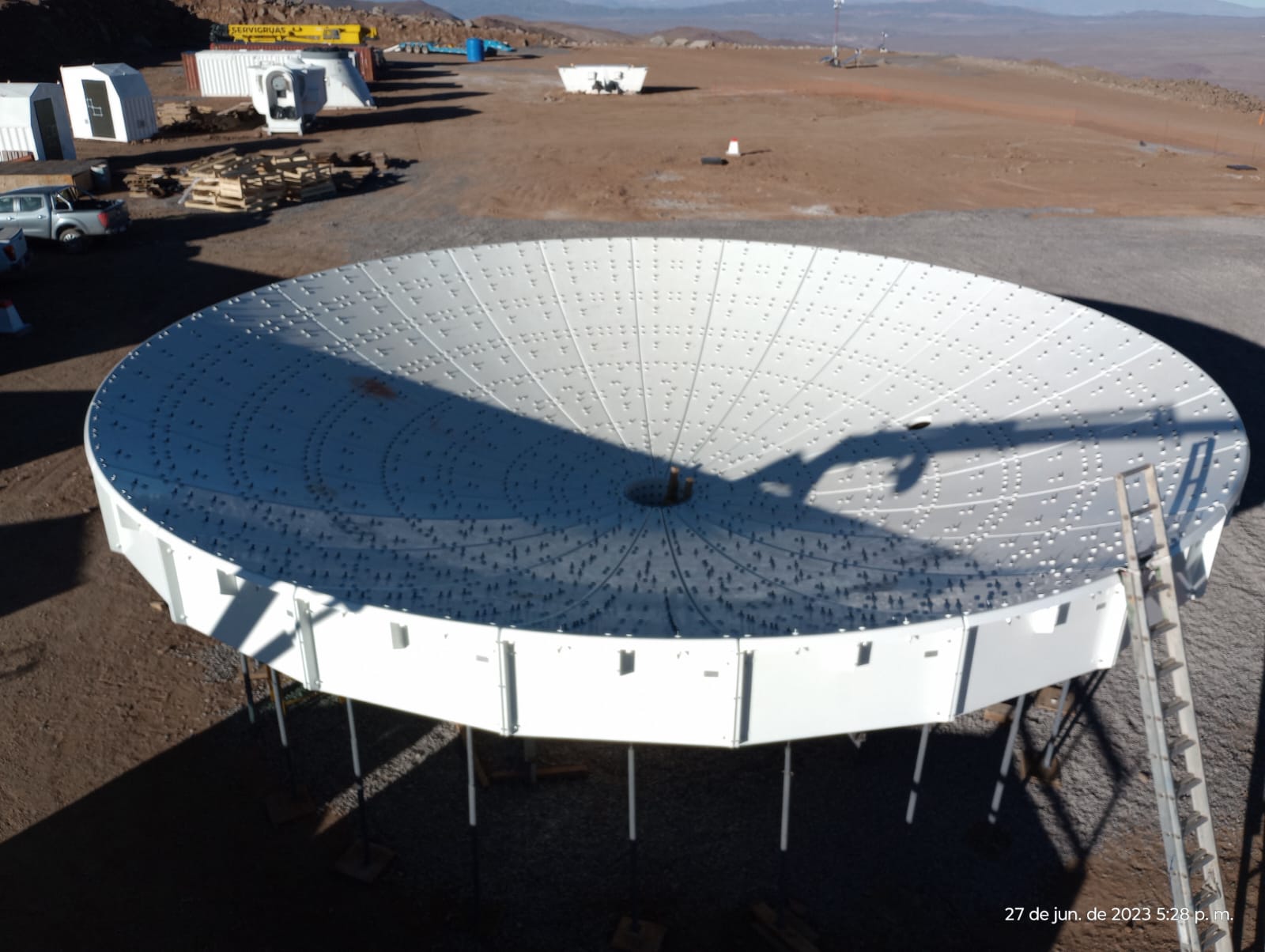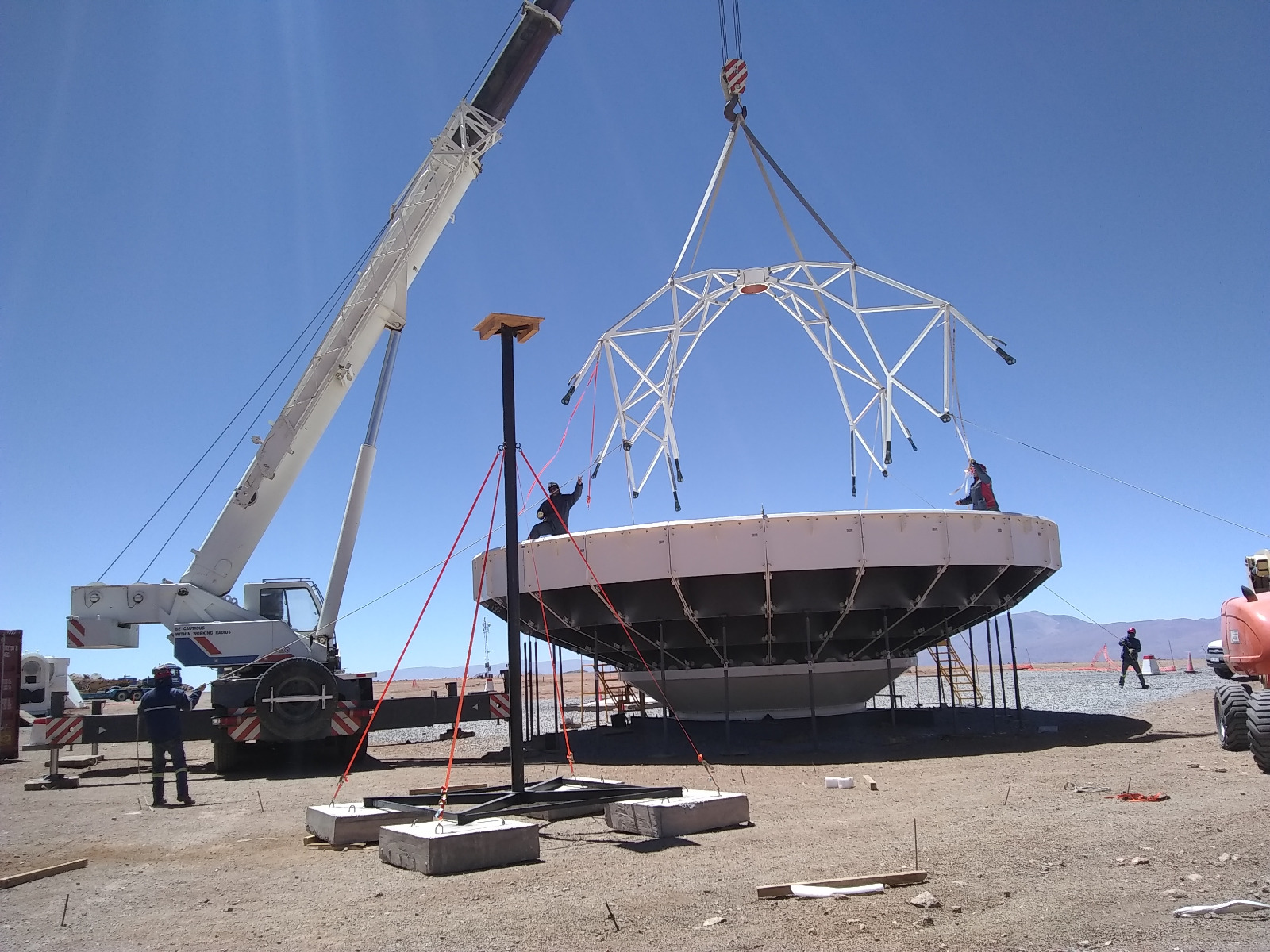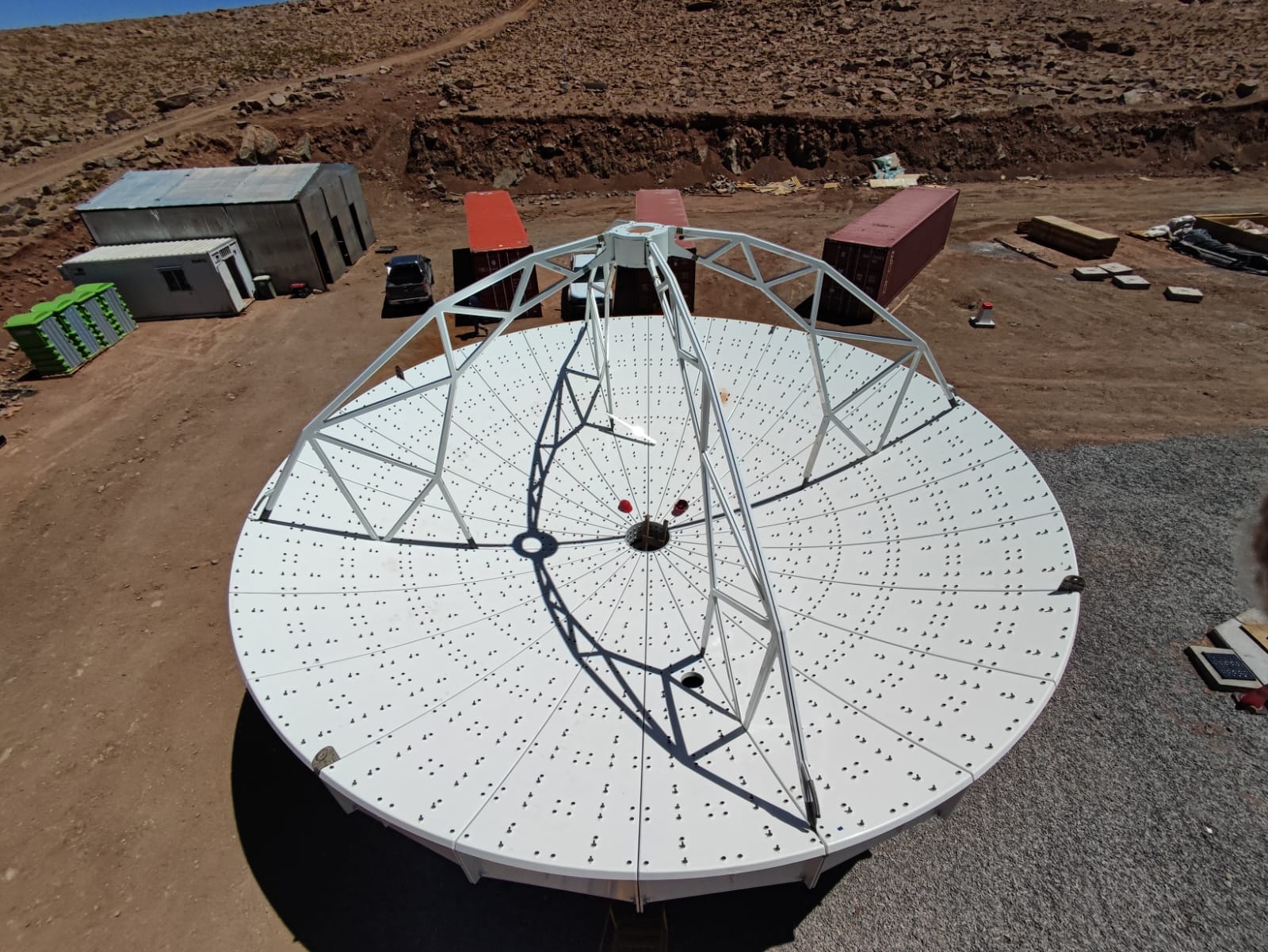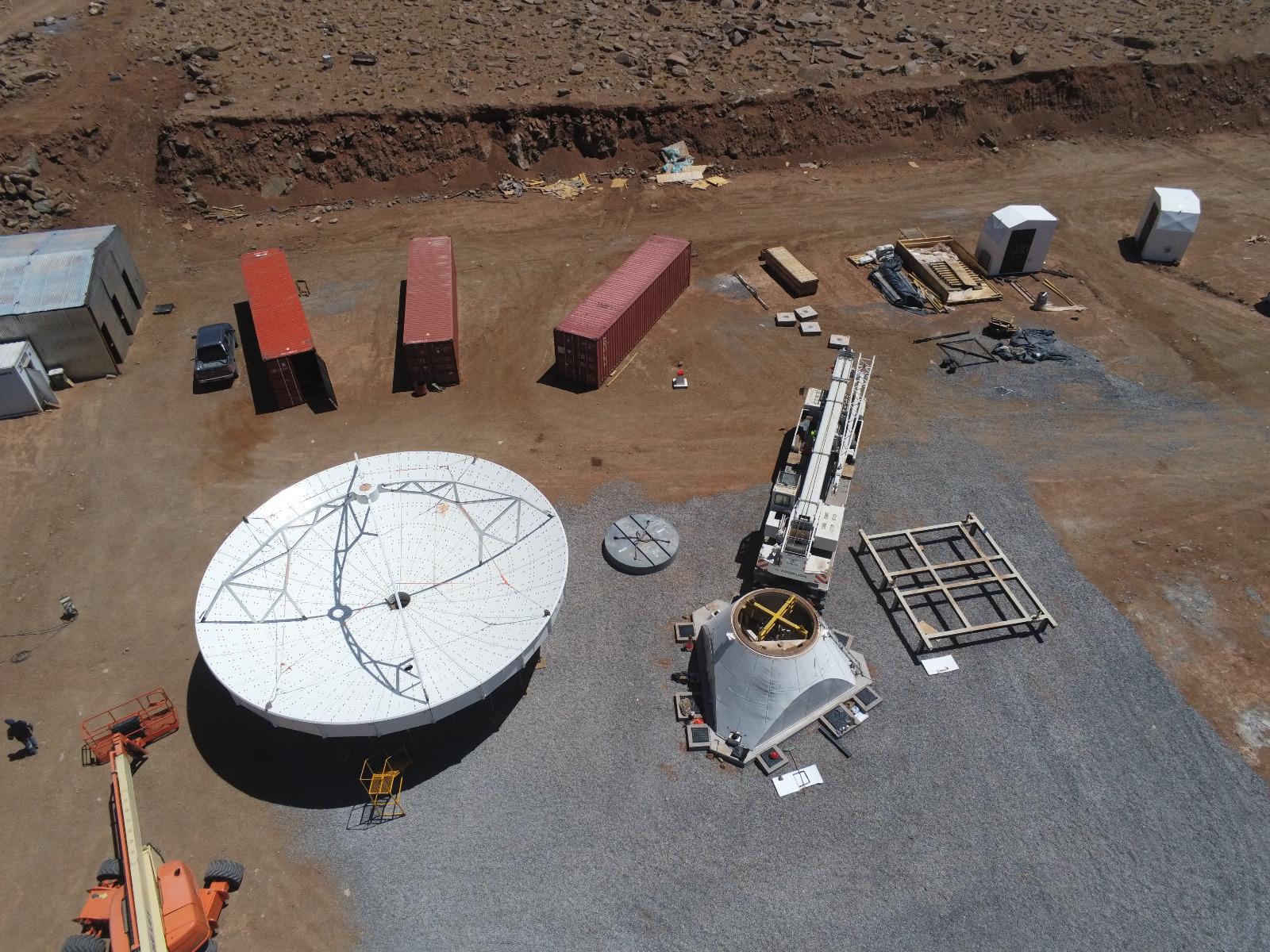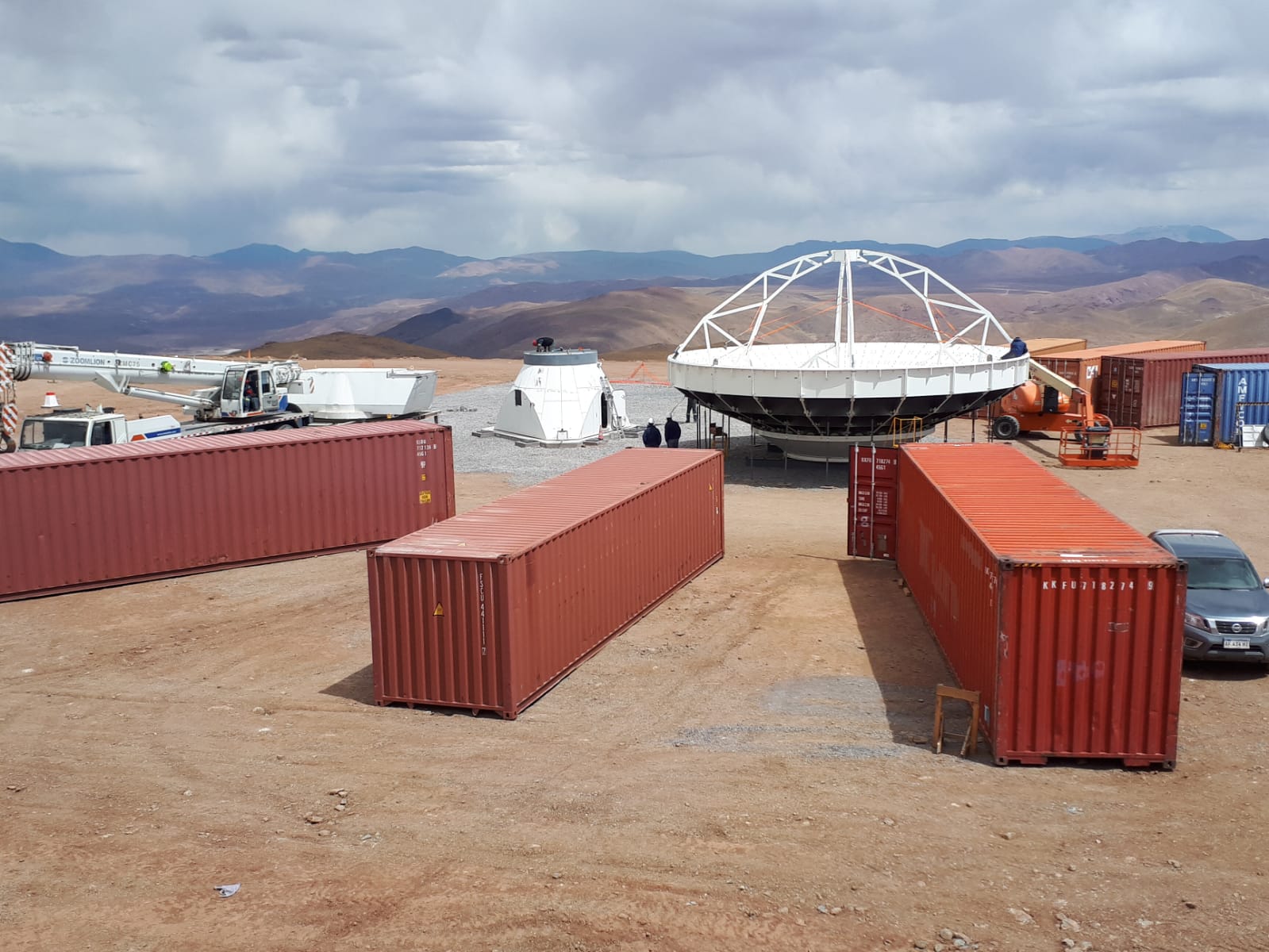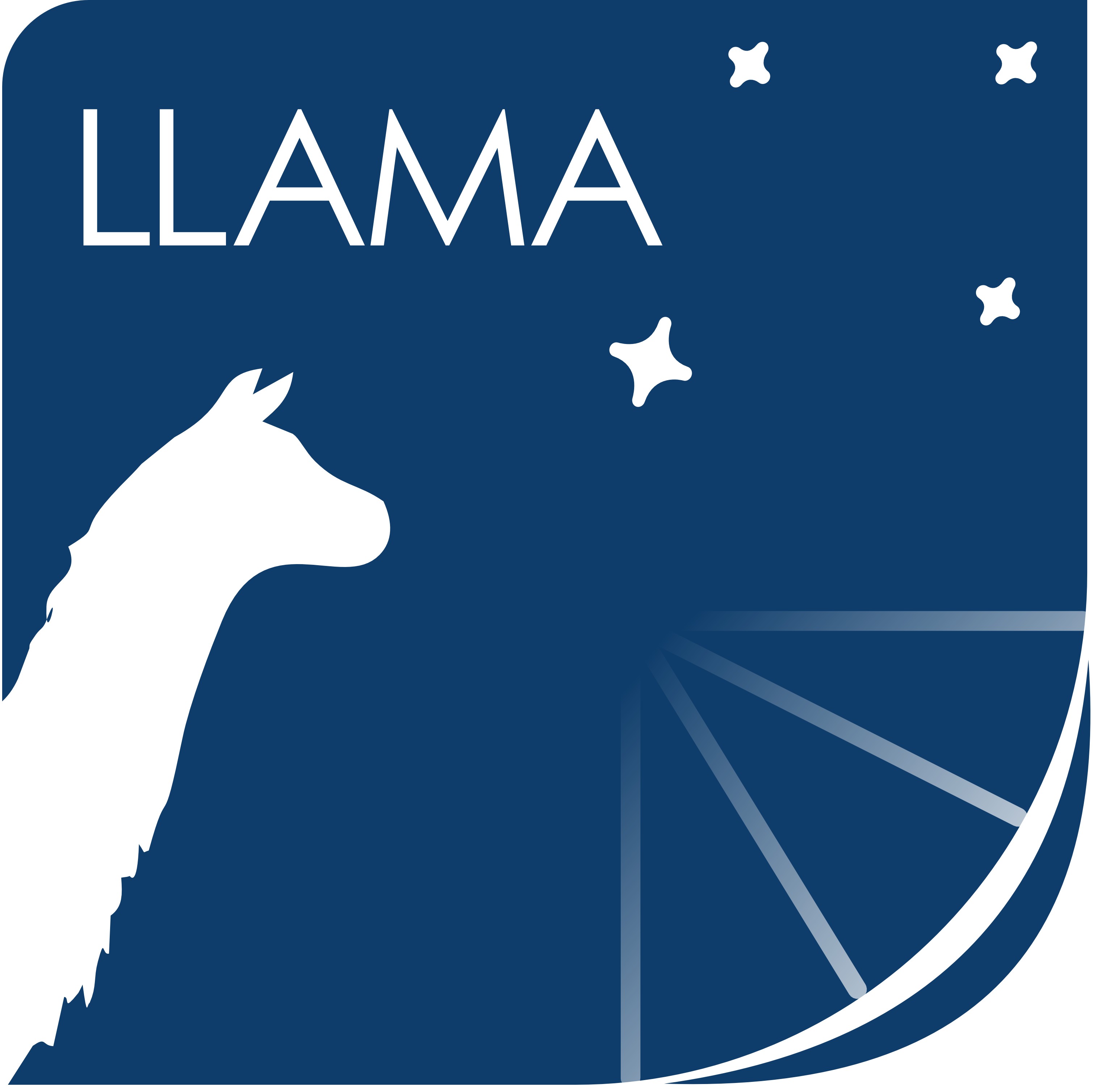 What is LLAMA?
What is LLAMA?
The Large Latin American Millimeter/sub-mm Array (LLAMA) Project is a scientific and technological collaboration between Argentina and Brazil whose objective is to install and operate a radio observatory in the Argentine Andes, located at an altitude of 4850 m, capable of performing observations of the Universe at millimeter and sub-millimeter wavelengths.
 Governance
Governance
The LLAMA Project formally began in 2014, with the signing of an agreement between FAPESP, USP (Brazil) and MinCyT (Argentina) aimed at physical infrastructure works at the selected site, besides the acquisition and assembly of the VERTEX antenna.
In December 2023, a new agreement was signed, including activities to reach the milestone of the first light in the new radio observatory in the next few years.
LLAMA is coordinated by a Steering Committee, with members appointed by signatory institutions from both countries. The Committee is assisted by a Science Group, divided into several subgroups and with broad participation of members from the astronomical communities of Argentina and Brazil.
 Science, technology and social development
Science, technology and social development
The conception and execution of the LLAMA project, as well as the future operations of the observatory, involve various sectors of society at both a binational and international level. From civil construction to the development of mechanical, electrical and optical components, along with educational activities at different levels and the promotion of astrotourism, LLAMA has a growing and positive impact on the communities it engages with. LLAMA will also stimulate the reorganization of the radio astronomy in both partner countries, attracting and motivating astronomers, engineers and students. Additionally, it will increase the number of collaborations with institutions worldwide.
The LLAMA project acknowledges the privilege of establishing its facilities and observing the Universe from a unique natural and cultural site in the Argentinean Puna.
LLAMA will be a versatile astronomical facility that will support the scientific community in exploring a wide range of scientific topics, including:

The molecular composition and evolution of the Universe

Black holes, their accretion disks and relativistic jets

Stellar formation and evolution from local to the larger scales of the Universe

The structure of the Milky Way, our Galaxy

The Sun

Planetary atmospheres

Extragalactic astronomy

Perspectives of future participation in Interferometric experiments






Water vapor in the atmosphere is the main obstacle to astronomical observations at millimeter and submillimeter wavelengths, as it compromises the transparency of the atmosphere. Then, the radio observatories operating in these frequency range need to be instaled in the most higher and drier places of Earth.
LLAMA is being installed in the Puna de Atacama in the northwestern part of Argentina, at a place whose terrestrial coordinates are 66º 28' 29.4" W and -24º 11' 31.4" S. The site, locally known as Alto Chorrillos, is located at an altitude of 4850 meters above sea level (masl), about 180 km south-east of the Atacama Large Millimeter/Submillimeter Array observatory (ALMA). Alto Chorrillos has atmospheric conditions similar to those of Chajnantor (Chile), where ALMA was installed.
An area of 400 hectares was allocated for this project by the Government of the province of Salta. The nearest town, 16 km away, is San Antonio de los Cobres, while the city of Salta is about 160 km away from Alto Chorrillos.
Thanks to the Goverment of Salta, LLAMA, as well as the others observatories that are being installed in the region, have a proper building in San Antonio de los Cobres, located at 16 km from Alto Chorrillos. Laboratories, offices and accommodations will be installed there to provide the necessary infrastructure for basic maintenance and initial remote operation.
San Antonio de los Cobres is 3700 meters above sea level. Due to the high altitude of the place, the LLAMA headquarters must be installed in the city of Salta, from where the radio telescope's regular remote operations will be carried out in the future.















LLAMA is conceived and designed to be a long-lived user observatory, respectful of the environment and the local traditions. Its scientific impact in the bi-national community will be determined by the quality of the LLAMA instruments, the local development of new instrumentation and technology, the growth of the bi-national radio-astronomical communities, the creativity and industry of its scientist users, and the economic, cultural and scientific spill-over near the LLAMA site.

